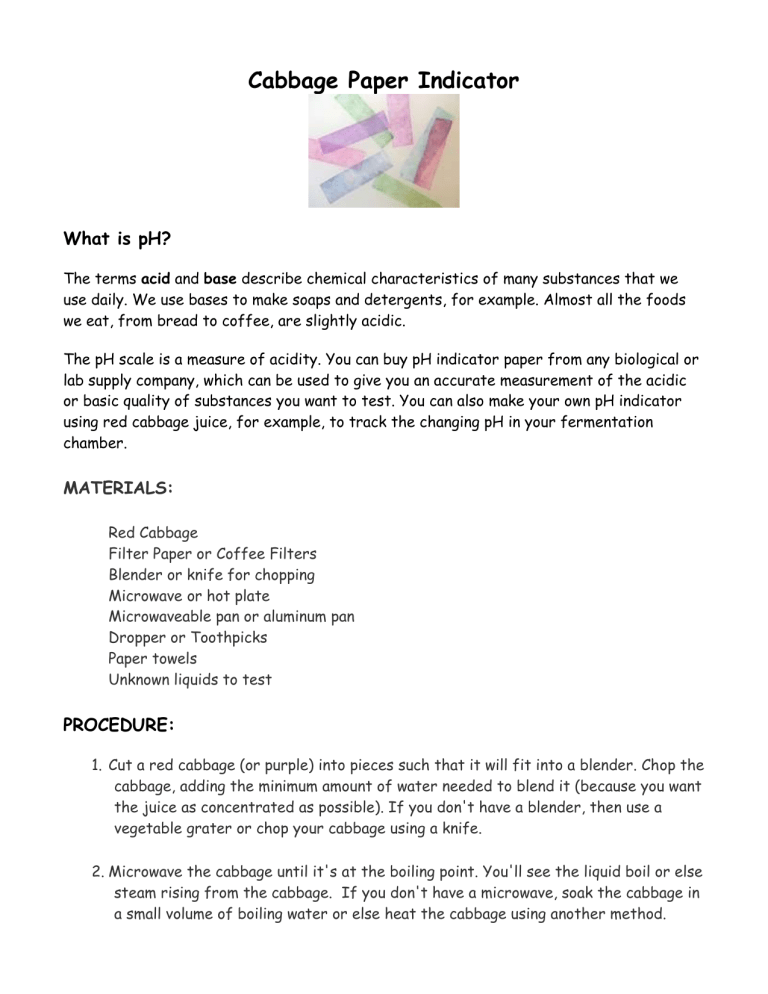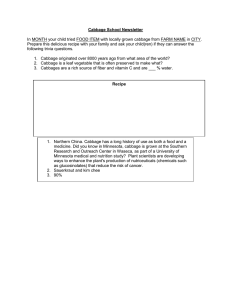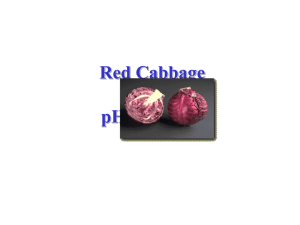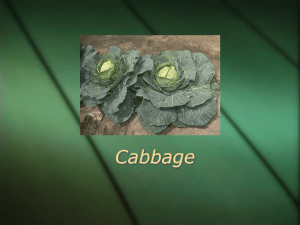
Cabbage Paper Indicator What is pH? The terms acid and base describe chemical characteristics of many substances that we use daily. We use bases to make soaps and detergents, for example. Almost all the foods we eat, from bread to coffee, are slightly acidic. The pH scale is a measure of acidity. You can buy pH indicator paper from any biological or lab supply company, which can be used to give you an accurate measurement of the acidic or basic quality of substances you want to test. You can also make your own pH indicator using red cabbage juice, for example, to track the changing pH in your fermentation chamber. MATERIALS: Red Cabbage Filter Paper or Coffee Filters Blender or knife for chopping Microwave or hot plate Microwaveable pan or aluminum pan Dropper or Toothpicks Paper towels Unknown liquids to test PROCEDURE: 1. Cut a red cabbage (or purple) into pieces such that it will fit into a blender. Chop the cabbage, adding the minimum amount of water needed to blend it (because you want the juice as concentrated as possible). If you don't have a blender, then use a vegetable grater or chop your cabbage using a knife. 2. Microwave the cabbage until it's at the boiling point. You'll see the liquid boil or else steam rising from the cabbage. If you don't have a microwave, soak the cabbage in a small volume of boiling water or else heat the cabbage using another method. 3. Allow the cabbage to cool (about 10 minutes). 4. Filter the liquid from the cabbage through a filter paper or coffee filter. It should be deeply colored. 5. Soak a filter paper or coffee filter in this liquid. Allow it to dry. Cut the dry colored paper into test strips. 6. Use a dropper or toothpick to apply a little liquid to a test strip. The color range for acids and bases will depend on the particular plant. If you like, you can construct a chart of pH and colors using liquids with a known pH so that you can then test unknowns. Examples of acids include hydrochloric acid (HCl), vinegar, and lemon juice. Examples of bases include sodium or potassium hydroxide (NaOH or KOH) and baking soda solution. 7. Another way to use your pH paper is as a color-change paper. You can draw on pH paper using a toothpick or cotton swab that has been dipped in an acid or base. DATA: Unknown #1 #2 #3 #4 #5 #6 Color pH




